HISTORICAL MARKS OF THE IMPERIAL CITADEL OF THANG LONG
The Imperial Citadel of Thang Long is not only one of the outstanding cultural heritages of Vietnam but also a symbol of the history, culture, and development of the country through the ages. Located in the center of Hanoi, this relic has witnessed many historical changes and is a place to preserve the unique cultural values of the nation. In this article, we will explore the mark of the Imperial Citadel of Thang Long through many different aspects.
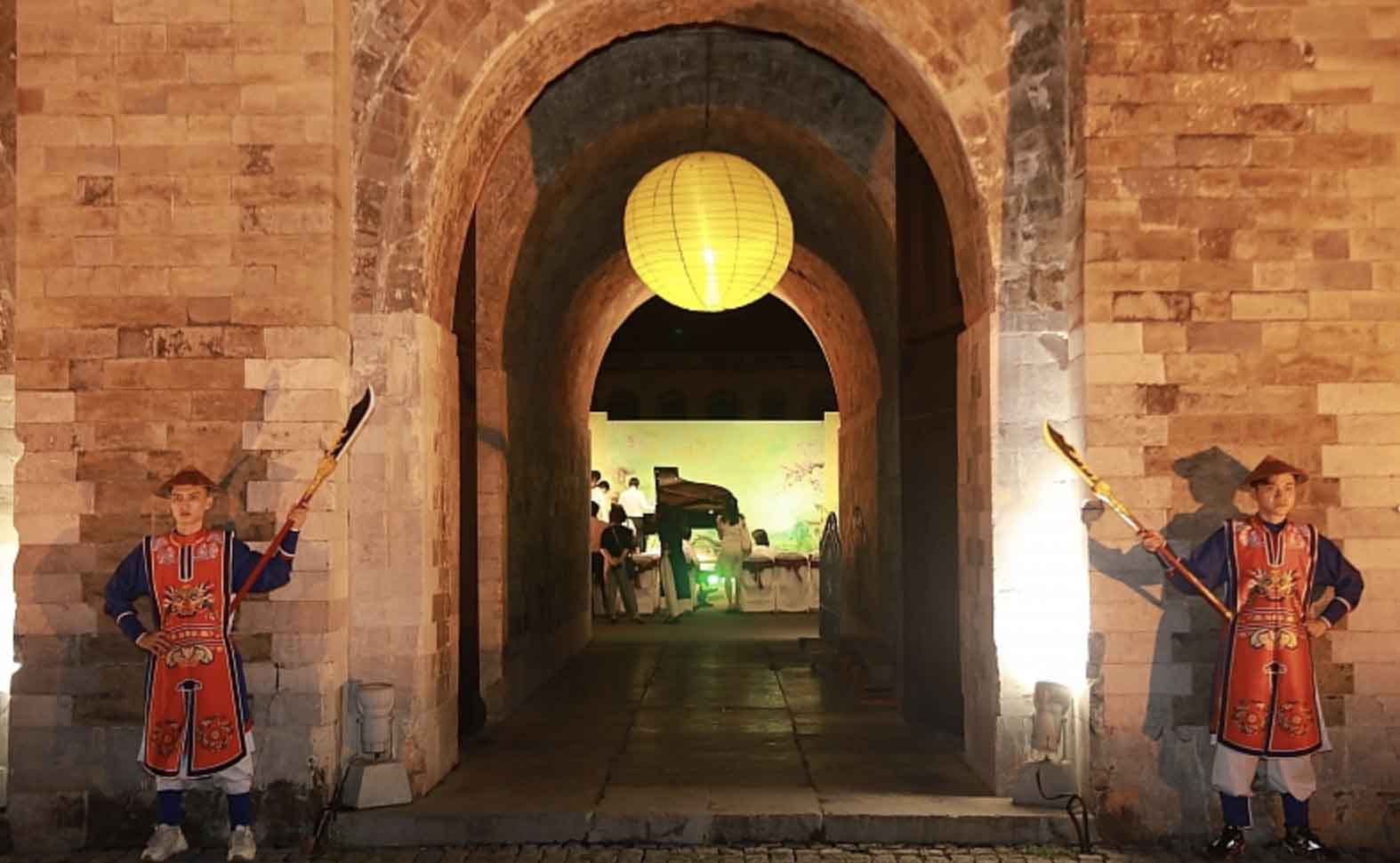
Geographical Location
The central relic area of Thang Long Imperial Citadel - Hanoi covers an area of 20 hectares, including the archaeological site at 18 Hoang Dieu and the remaining relics in the Hanoi Citadel relic area such as Bac Mon, Doan Mon, Hau Lau, Kinh Thien Palace stone dragon, Dragon House, D67 House and Hanoi Flag Tower.
This relic cluster is surrounded by 4 roads: to the north is Phan Dinh Phung Street, to the south is Dien Bien Phu Street, to the east is Nguyen Tri Phuong Street, and to the west is Hoang Dieu Street.
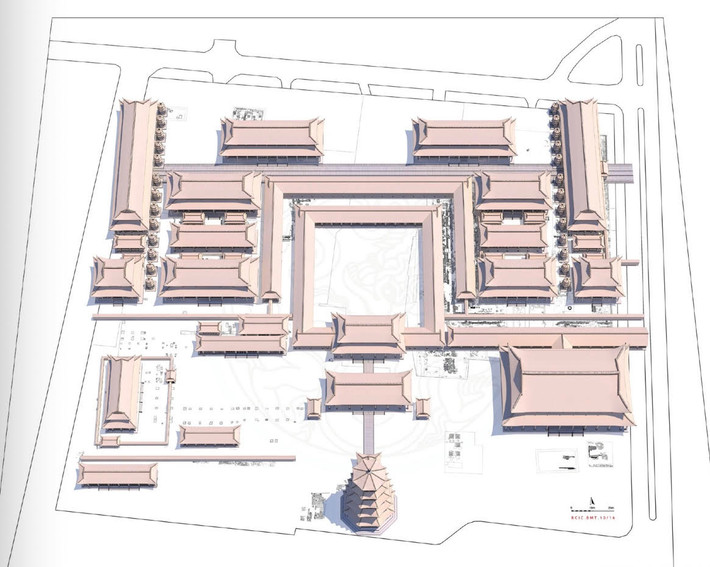
History of the Formation of Thang Long Imperial Citadel
Originated from the early period
The origin of the Thang Long Imperial Citadel dates back to the 7th century when King Ly Thai To decided to choose this place as the capital of Dai Viet. As soon as the king's delegation arrived at Dai La, the king saw an image of a golden dragon flying up to the sky, so he decided to name this land Thang Long. That is how the name Thang Long Imperial Citadel appeared. From here, the Thang Long Imperial Citadel officially became the capital of an independent, unified state. Before that, this area was the residence of many feudal dynasties and ancient civilizations. The vestiges of the Dong Son civilization and archaeological relics show that this place was once an important center in Vietnamese history.
Development through the dynasties
Throughout history, Thang Long Imperial Citadel has undergone many expansions and reconstructions under the rule of different dynasties such as Ly, Tran, Le, and Nguyen. Each dynasty left its distinct marks, creating a diverse picture of architecture and culture. Constructions such as Kinh Thien Palace, Hau Lau, ... and the citadel walls were built with high technology, demonstrating the remarkable development of construction art at that time.
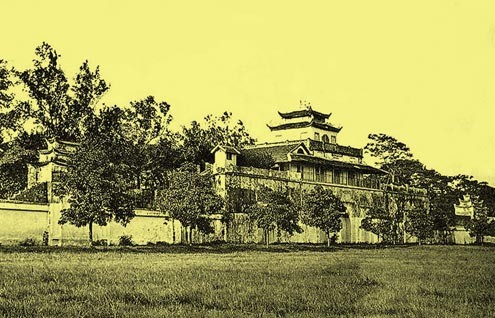
The role of the Imperial Citadel in history
Thang Long Imperial Citadel was not only the residence of the kings but also the political, cultural, and religious center of the country. This was the place where many important historical events took place, from wars against foreign invaders to cultural activities and traditional festivals. The presence of the Imperial Citadel has contributed to creating the unique cultural identity of the Vietnamese people.
Architecture and Art at Thang Long Imperial Citadel
Classical architecture
The architecture of the Imperial Citadel of Thang Long bears the strong influence of classical Eastern architectural schools. The structures were built of baked bricks, stone, and wood, with elaborate carvings. The Kinh Thien Palace, where important court ceremonies were held, is a typical example of Ly Dynasty royal architecture.
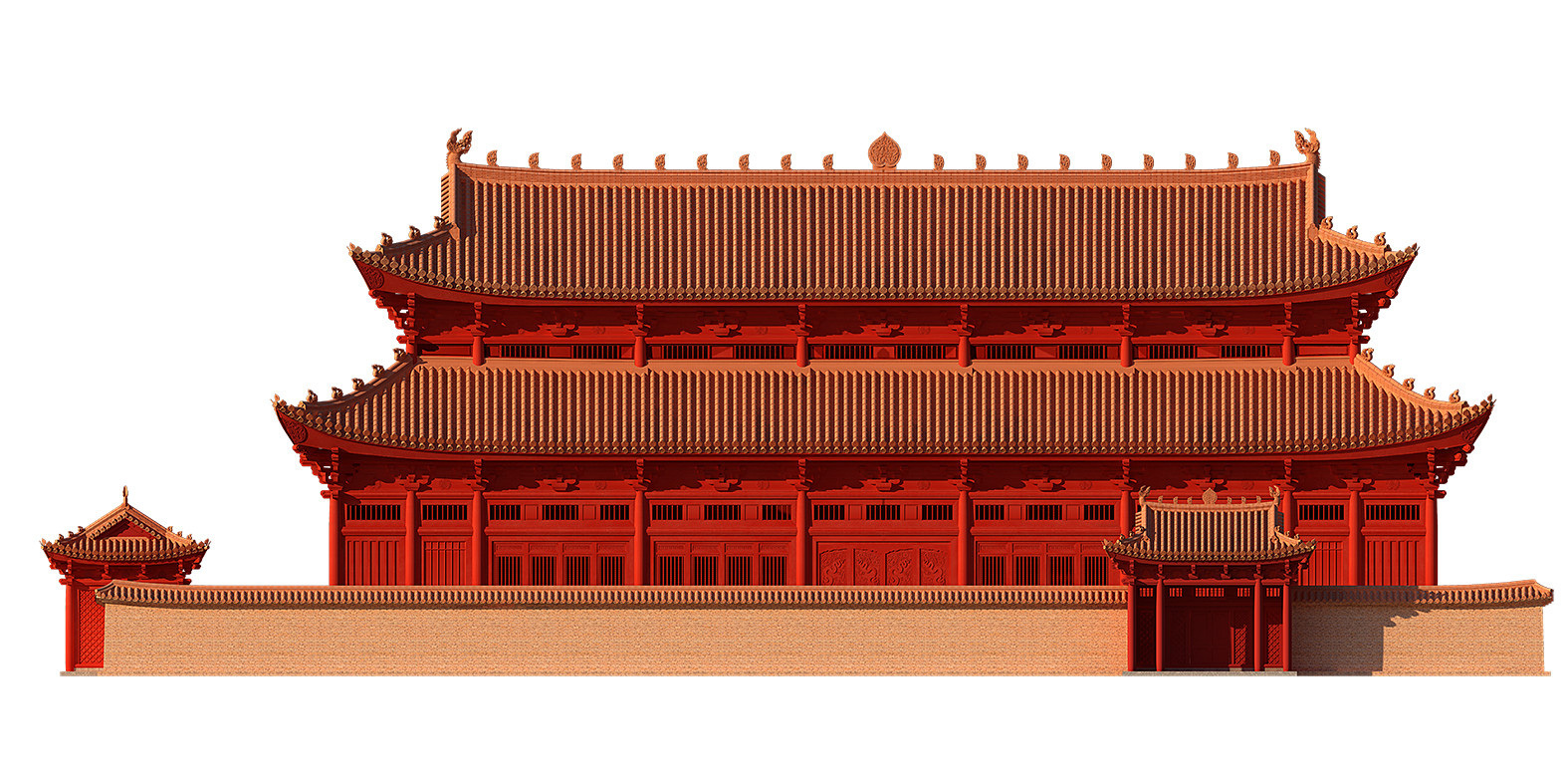
Decorative arts
Decorative art in the Imperial Citadel is rich and diverse. The murals, reliefs, and sculptures are all imbued with artistic values and profound cultural significance. Images of dragons, phoenixes, and lotus flowers often appear in the artworks, expressing respect for nature and folk beliefs.
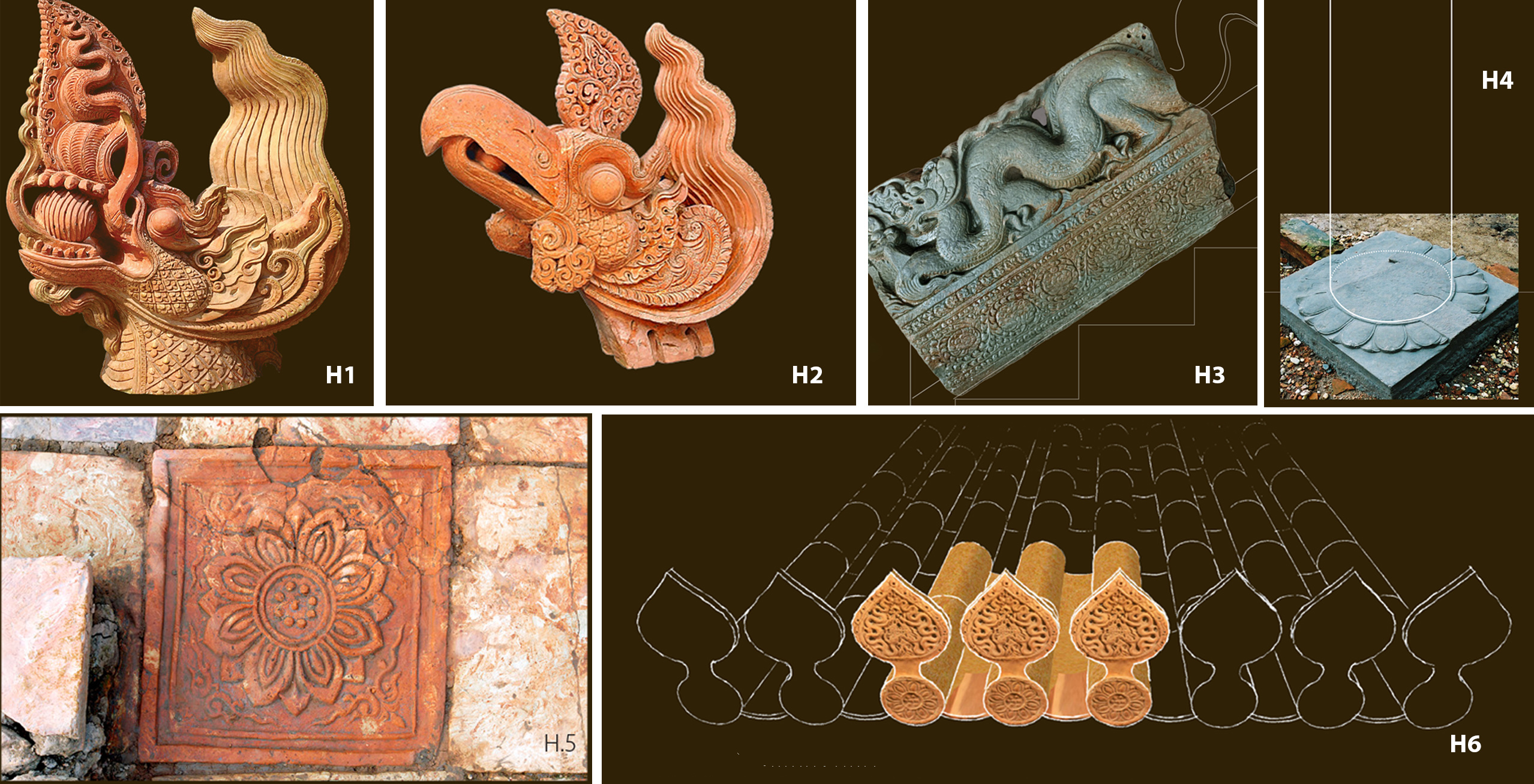
Intangible cultural heritage
In addition to architectural works, Thang Long Imperial Citadel is also a place to preserve many valuable intangible cultural heritages. Traditional festivals, rituals, and folk arts such as ca tru and hat xam are also preserved and developed here. This not only helps maintain cultural identity but also attracts tourists to visit and learn.
Cultural and Educational Values of Thang Long Imperial Citadel
Cultural values
Thang Long Imperial Citadel is not only a historical relic but also a symbol of Vietnamese culture. It contains many unique cultural values, reflecting the life, customs, and thoughts of the people through the ages. Cultural and artistic activities taking place here have created a space of intersection between the past and the present.
Education and research
Thang Long Imperial Citadel also plays an important role in education and historical research. Many schools and research institutes have organized study and tour programs here to raise awareness of the cultural and historical values of the nation. Learning about the Imperial Citadel helps the younger generation better understand their origins and the responsibility to preserve cultural heritage.
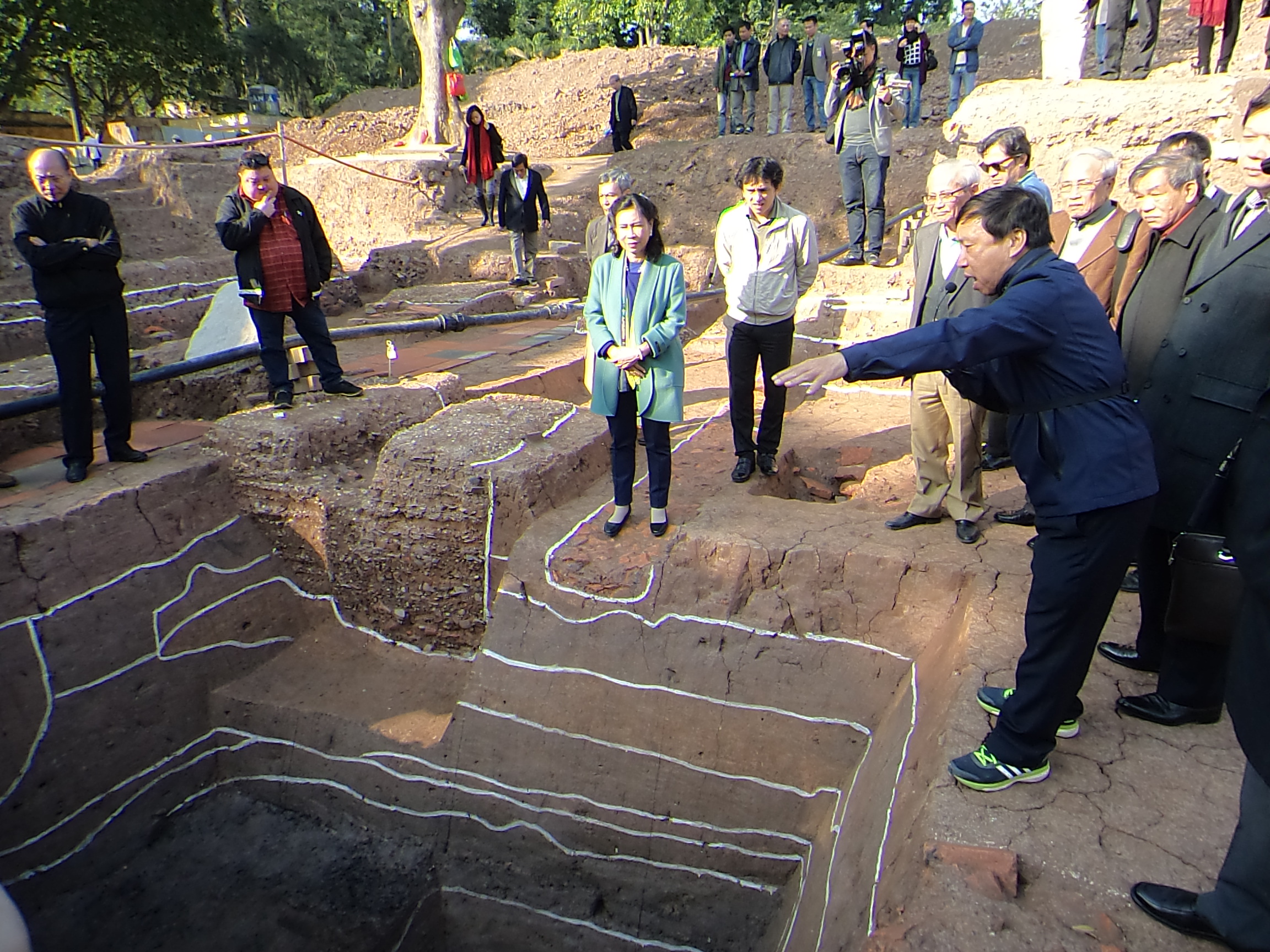
Tourism and economic development
With its unique cultural and historical values, the Imperial Citadel of Thang Long has become an attractive destination for domestic and foreign tourists. The tourism industry here not only contributes to the development of the local economy but also helps promote the image of Vietnamese culture to the world. Tourism activities combined with heritage conservation are increasingly focused.
Typical Attractions
Archaeological site 18 Hoang Dieu
The site includes the lower level, which is part of the eastern side of Dai La citadel under Cao Bien, Tang Dynasty, the upper level, which is the palace of Ly and Tran Dynasty, followed a central part of the eastern palace of Le Dynasty and the top level, which is part of the central part of Hanoi provincial citadel in the 19th century.
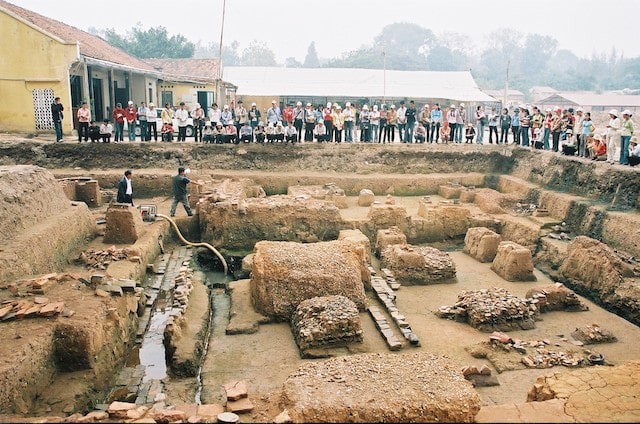
Hanoi Flag Tower
The Hanoi Flag Tower is a monument built in 1812 under the Gia Long Dynasty. The flagpole is 60 m high, consisting of a base, a pole body, and a watchtower. The square base covers an area of 2007 m² and consists of 3 gradually tapering levels. Each level has a flower wall with surrounding patterns. From the ground to the base of the 2nd level, you have to climb 18 steps on the East and West sides. To go from the 2nd level to the 3rd level, you also have to climb 18 steps at the two East and West doors. The 3rd level has 4 doors: East, West, South, North (with the names "Nghenh huc" (Welcoming the morning sunlight), "Hoi Quang" (reflecting sunlight), "Huong Minh" (facing the light)...) and from the bottom edge to the top edge, you have to climb 14 stairs.
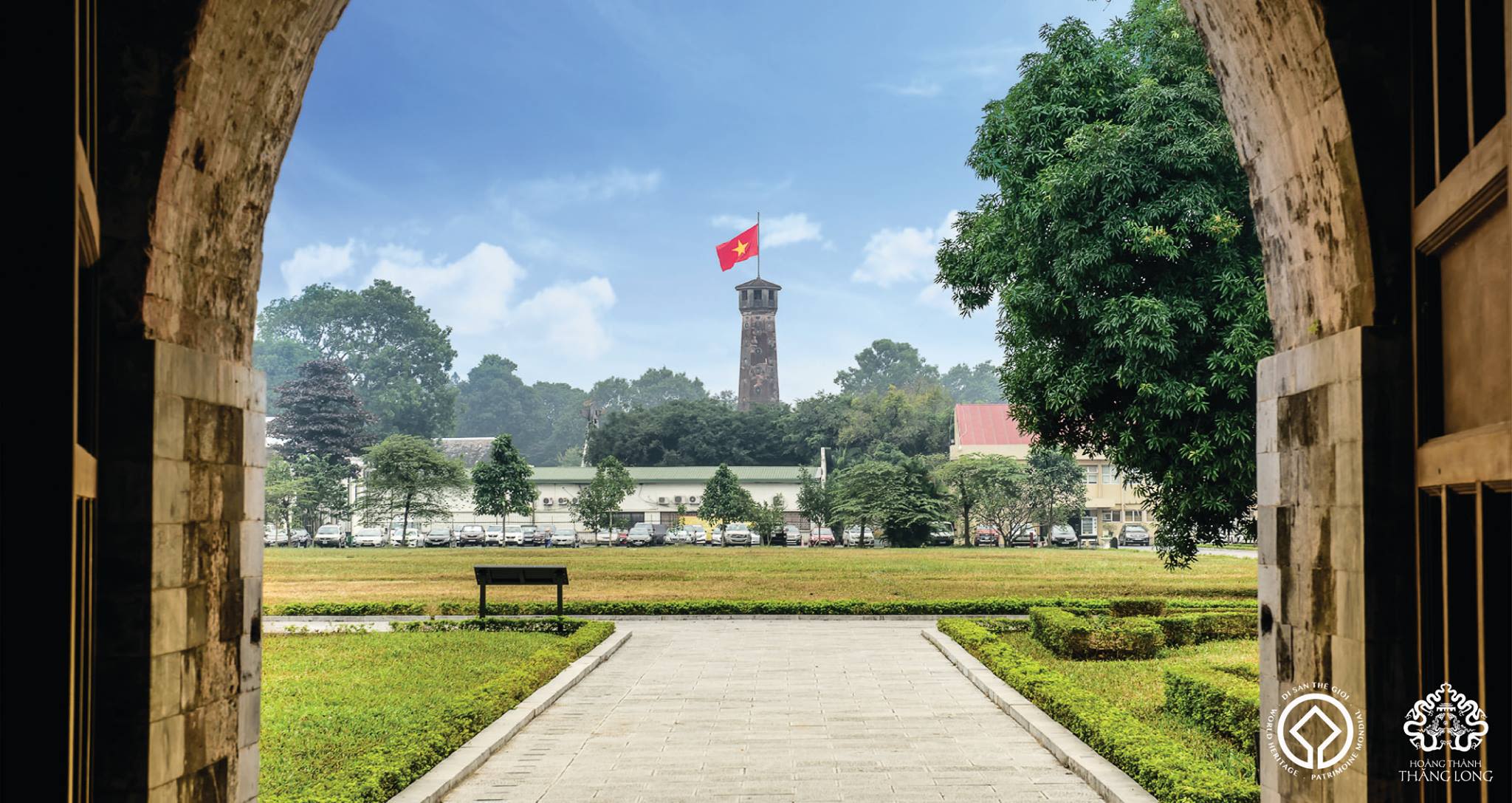
Doan Mon
Doan Mon is the arched gate leading to Kinh Thien Palace. Doan Mon consists of five stone gates, the outside is Tam Mon Gate around 1812 - 1814, the Nguyen Gia Long Dynasty destroyed, and built Cot Co (still standing today). In 2002, Vietnamese archaeologists were allowed to dig inside Doan Mon and found the "old horse carriage path" from the Tran Dynasty, using many Ly bricks. If further excavations are carried out, it will be possible to see the entire road from Doan Mon to Kinh Thien Palace in the North and the Southwest gate of Hanoi Citadel.
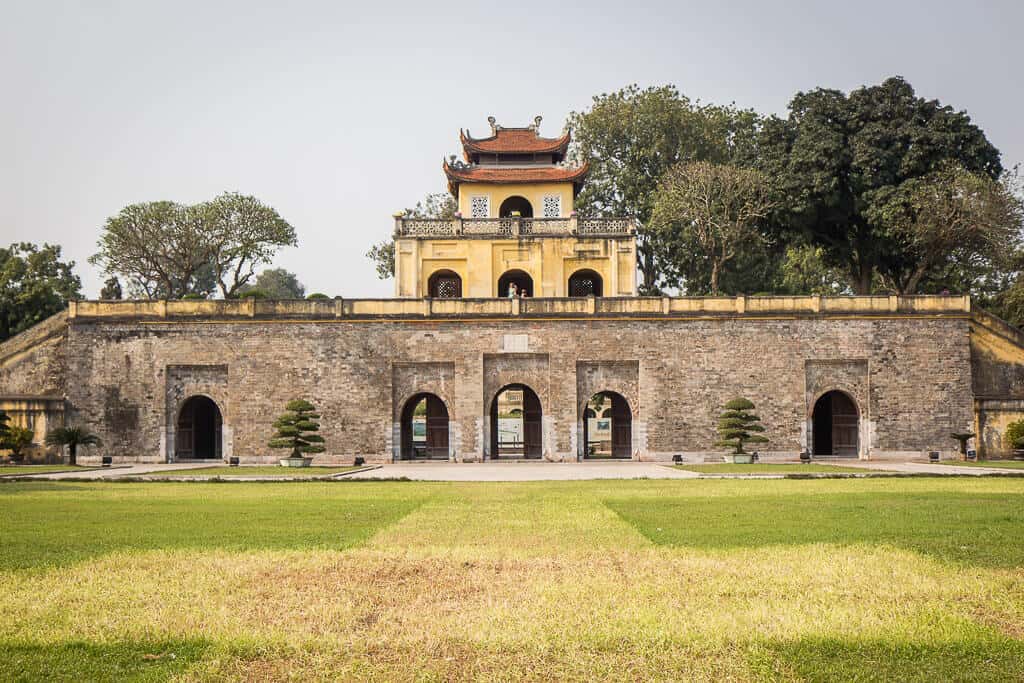
Dien Kinh Thien
Kinh Thien Palace is the central relic, the main nucleus in the overall historical sites of the Hanoi Citadel. Kinh Thien Palace occupies the central position of the relic site. In front of Kinh Thien Palace is Doan Mon, then Hanoi Flag Tower, behind is Hau Lau, North Gate, the east and west sides have surrounding walls and small doors. The only remaining trace of Kinh Thien Palace is the old foundation.
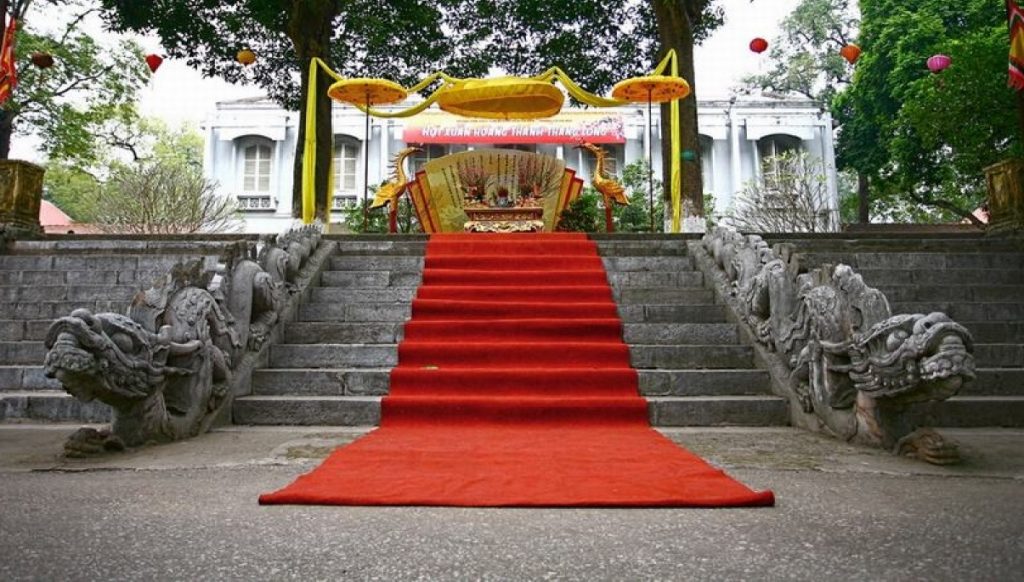
Conclude
The Imperial Citadel of Thang Long is not only a valuable cultural heritage but also a symbol of Vietnamese history and national identity. Over the ages, this place has witnessed many important historical events and is a place to preserve unique cultural values. The preservation and development of the Imperial Citadel of Thang Long is the responsibility of the whole society, in order to preserve cultural values for future generations.
other information
- HOIAN ANCIENT TOWN - UNESCO WORLD CULTURAL HERITAGE
- CO LOA CITADEL, CAPITAL OF ANCIENT AU LAC STATE
- ANCIENT CULTURE IN VIETNAMESE TERRITORY
- HOA LU ANCIENT CAPITAL, THE 1ST CAPITAL OF CENTRALIZED FEUDAL STATE OF VIETNAM
- THE LONGEST-REIGNING KING OF VIETNAM
- NGUYEN DYNASTY, THE LAST FEUDAL DYNASTY IN VIETNAM
- THE IMAGE OF BUFFALO IN VIETNAMESE TRADITIONAL CULTURE
- TAM DAO, AN IDEAL DESTINATION FOR WEEKEND
- FANSIPAN - THE PARADISE OF NORTH-WEST VIETNAM
- THE COCONUT, AN INDISPENSABLE FRIEND IN VIETNAM FOLK CULTURE
